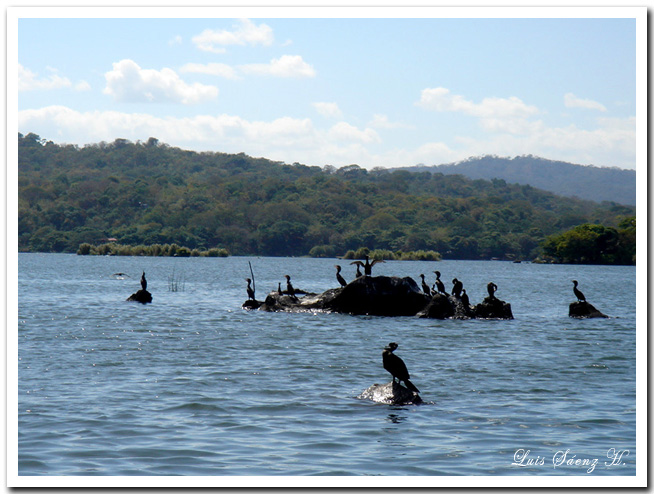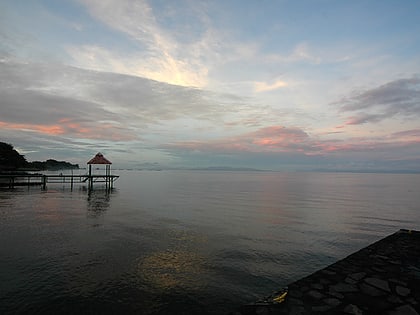Lake Nicaragua


Facts and practical information
Lake Nicaragua, also known as Cocibolca or Granada, is an expansive freshwater lake nestled in the heart of Nicaragua. As the largest lake in Central America, and the 19th largest in the world by area, it spans approximately 8,264 square kilometers, offering a rich habitat for a diverse range of flora and fauna. This natural wonder is not only significant for its size but also stands out for containing an oceanic ecosystem within a freshwater environment, including bull sharks, swordfish, and tarpon.
The lake is dotted with more than 400 islets, formed by a volcanic eruption thousands of years ago. Among these islets, the most notable is Ometepe Island, formed by two volcanoes rising from the lake, creating a figure-eight shape that has captivated visitors and locals alike. Ometepe is known for its pre-Columbian history, with petroglyphs and artifacts that hint at the island's ancient cultural significance.
Beyond its ecological and historical importance, Lake Nicaragua serves as a crucial resource for the surrounding communities, supporting local fisheries and providing water for irrigation and consumption. The lake also plays a vital role in the country's economy through its contribution to tourism and transportation, as it offers scenic boat tours and ferries that connect the mainland to the islands.
Despite its beauty and utility, Lake Nicaragua faces environmental challenges, including pollution and the threat of invasive species. Conservation efforts are ongoing to preserve this unique body of water for future generations.
Lago Nicaragua
